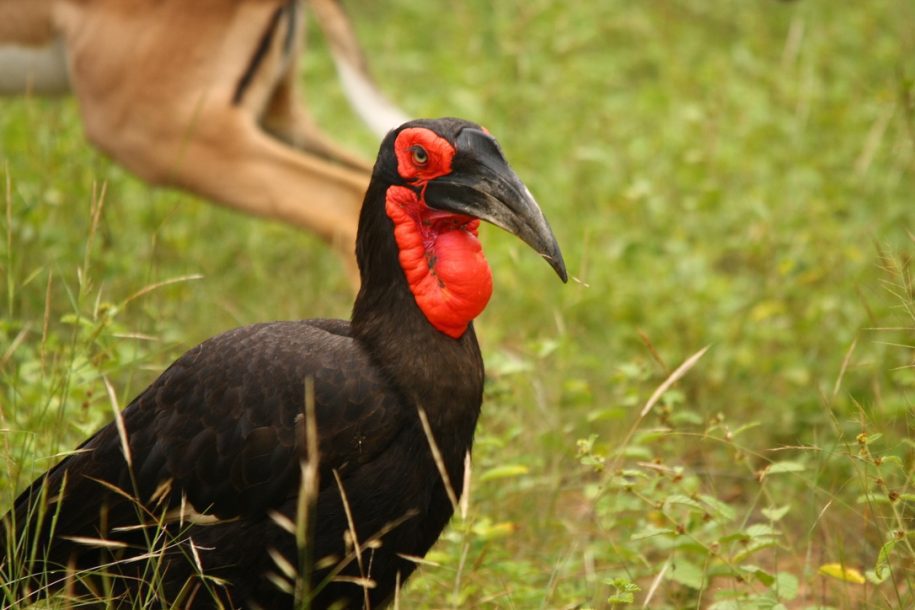Safeguarding the Endangered Southern Ground-Hornbill
Introduction
The Southern Ground-Hornbill, scientifically known as Bucorvus leadbeateri, is an iconic species that roams the African savannas and grasslands. Sadly, its population is rapidly declining, leading to its classification as regionally endangered in South Africa and Namibia. This decline can be attributed to a combination of anthropogenic threats and the species’ unique biology and life history traits. In this article, we will explore the various challenges faced by the Southern Ground-Hornbill and the conservation efforts being undertaken to ensure its survival.
Cultural Importance and Conservation Challenges
The Southern Ground Hornbill holds cultural significance throughout its range, which presents both conservation opportunities and challenges. In areas where cultural protection is strong, the species can coexist with rural communities, sharing croplands and grazing areas. However, in some regions, cultural protection is eroding, and the birds are hunted for traditional medicine and ritual purposes. In areas without cultural associations, the species is hunted for meat, leading to its complete disappearance outside of protected areas.
The Urgent Need for Conservation Intervention
Preliminary Population and Habitat Viability Analyses have indicated that without conservation intervention, the Southern Ground-Hornbill will face extinction. To address this urgent need, a multi-pronged, multi-disciplinary approach is being pursued. A Single Species Recovery Plan was developed in 2011, and it is currently being implemented by a collaborative action group comprising various partners and stakeholders.
Mitigating Threats and Promoting Awareness
One of the primary focuses of conservation efforts is to mitigate the threats faced by the Southern Ground Hornbill. This includes raising awareness about the species and its vulnerabilities. By educating people about the ground hornbill’s unique biology and the threats it faces, conservationists aim to change behaviours and minimize human impacts. Awareness campaigns are conducted in areas where wild populations exist, such as commercial farmland, rural communities, and areas targeted for reintroduction.


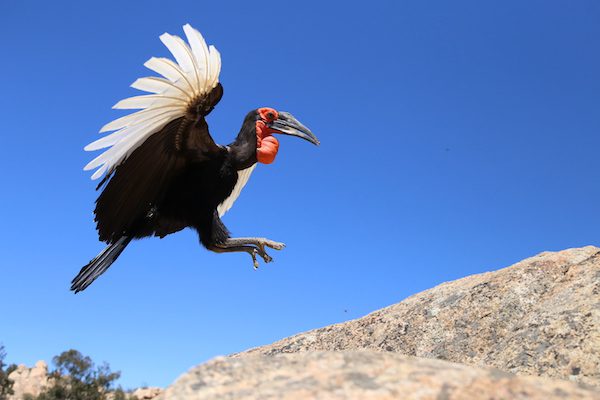

Specific Conservation Strategies
Electrocution Mitigation
To reduce electrocution risks, efforts are underway to insulate transformer boxes. However, this solution is expensive and may not be feasible for all electrical entities. Therefore, there is ongoing research to develop cost-effective alternatives that can effectively mitigate the electrocution threat.
Window-Breaking Prevention
Window-breaking incidents can be prevented by using perforated vinyl film to coat windows. This film eliminates reflections that trigger the ground hornbills’ territorial response while allowing clear vision from within. Unlike other window-covering options, such as shade-cloth screens or paint, vinyl film is more attractive and cost-effective. It is already being widely used in rural schools and dwellings, but efforts are underway to develop an attractive version suitable for upmarket lodges.
Education and Awareness Initiatives
Education and awareness play a crucial role in mitigating threats to the Southern Ground-Hornbill. By providing knowledge about the species and its conservation status, people can make informed decisions to protect the ground hornbills and their habitats. These initiatives target both areas with existing wild populations and those primed for reintroduction, where the species has been absent for several decades.
Artificial Nests for the Ground-Hornbill
Southern Ground-Hornbills readily accept artificial nest boxes made from tree logs. These nests provide suitable breeding sites, but their limited lifespan reduces their effectiveness in a national-scale recovery program. Researchers are currently investigating the use of permanent materials to develop more durable and sustainable artificial nests.
Reintroduction and Captive Breeding Programs
The Southern Ground-Hornbill’s breeding habits present an opportunity for captive breeding and reintroduction programs. The species typically rears only one chick per clutch, leaving redundant offspring available for use in coordinated captive breeding programs. While hand-rearing ground hornbill chicks is challenging, successful protocols have been developed over the past decade. These protocols prioritise socialising the chicks with their species to ensure their success when reintroduced into the wild. The construction of a specialised centre will facilitate optimal socialisation and contribute to the growth of a healthy and genetically diverse population.
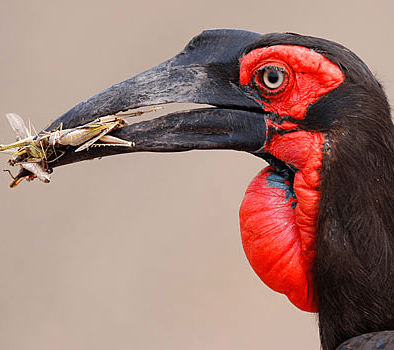
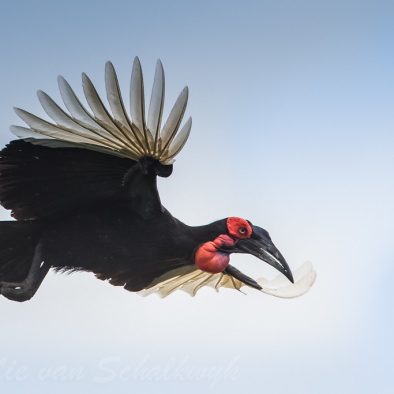
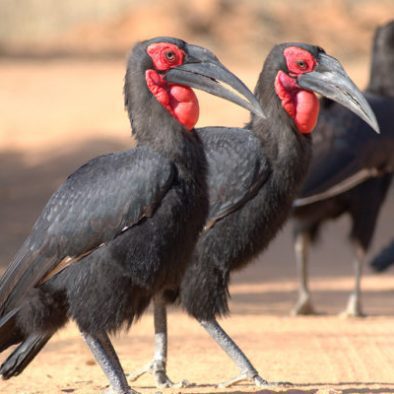
Conclusion
The Southern Ground Hornbill is facing numerous threats that have pushed it to the brink of extinction. However, conservation efforts are underway to mitigate these threats and protect the species. By implementing strategies such as electrocution mitigation, window-breaking prevention, education and awareness initiatives, artificial nests, and captive breeding programs, conservationists are working tirelessly to ensure the survival of this magnificent bird. It is crucial that these efforts continue and that individuals, communities, and governments join forces to protect the Southern Ground-Hornbill and its unique place in the African ecosystem.

